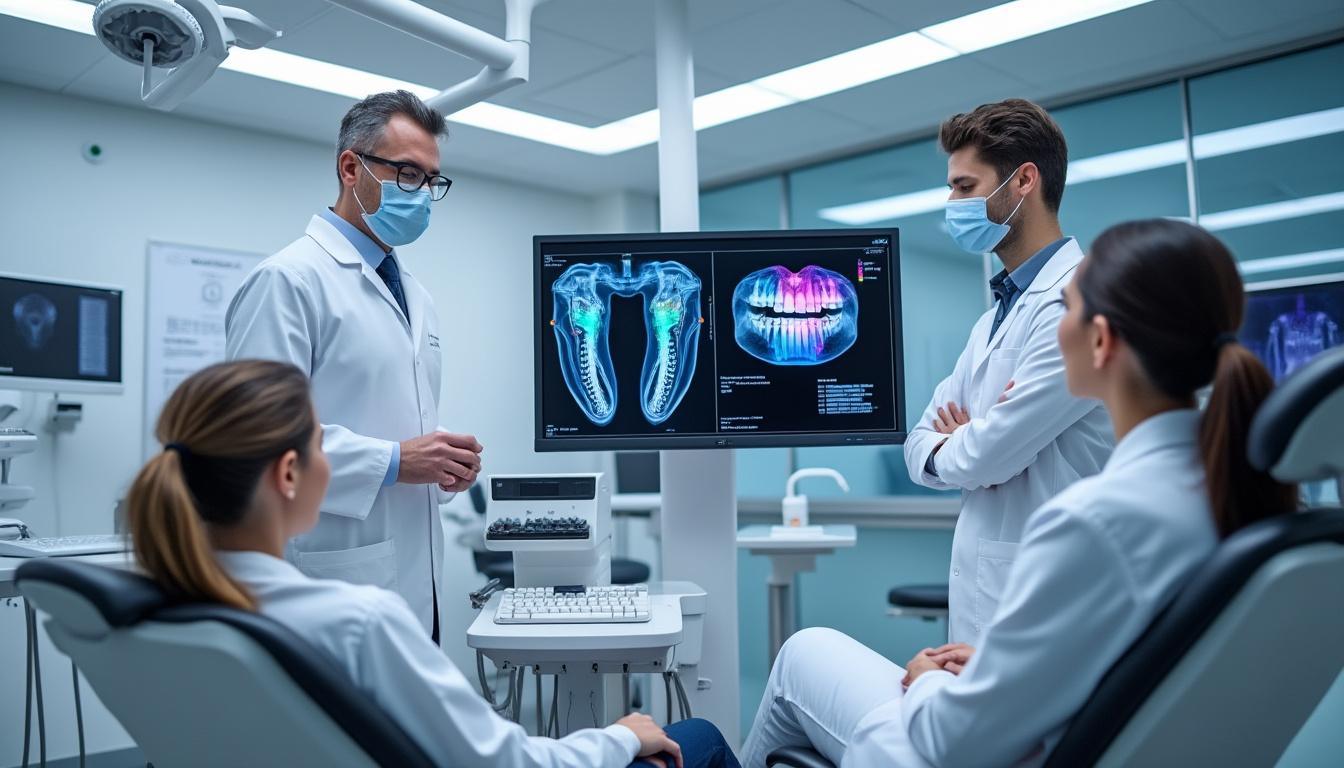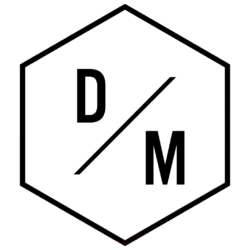Discover Nerovet AI Dental: revolutionizing dentistry with smart AI solutions for better diagnostics, efficiency, and patient care.
Nerovet AI Dental: Intelligent Diagnostic Imaging and Workflow Integration
The integration of AI-driven analysis into dental imaging marks a turning point for clinical workflows. Nerovet AI Dental positions itself as a solution that connects with existing radiography, CBCT, and intraoral scanners to produce actionable diagnostics. Clinics that adopt this approach report faster triage, reduced diagnostic ambiguity, and clearer communication between dentists and patients.
BrightOak Dental, a mid-size clinic used throughout this article as a running example, implemented Nerovet’s imaging modules to augment routine exams. Within months the clinic saw reductions in misread radiographs and faster referral decisions. These practical outcomes highlight the platform’s capacity to work alongside, not replace, clinician expertise.
How Nerovet AI improves imaging accuracy and efficiency
AI models trained on diverse datasets can detect subtle radiographic features that might be overlooked in busy practices. Nerovet applies convolutional neural networks tuned for dental anatomy, enhancing detection of caries, periapical lesions, periodontal bone loss, and anatomical landmarks. The system flags areas of concern and suggests confidence levels, enabling clinicians to prioritize cases efficiently.
Integration into existing dental software ecosystems is central to adoption. Nerovet’s interfaces are designed for interoperability with widely used practice management systems and DICOM-based imaging. That technical compatibility reduces friction and allows practices like BrightOak to retain familiar workflows while benefiting from AI augmentation.
- Faster diagnosis: Automated pre-screening reduces review time per image.
- Improved sensitivity: Better detection of early-stage lesions on radiographs.
- Audit trails: Documented AI suggestions for medico-legal clarity.
- Interoperability: DICOM-compliant outputs for downstream systems.
| Feature | Clinical Benefit | Practical Example |
|---|---|---|
| Lesion Detection | Earlier intervention, reduced progression | Spotting an incipient periapical radiolucency during recall |
| Anatomical Mapping | Safer implant planning | Identifying mandibular canal proximity on CBCT |
| Automated Measurements | Consistent periodontal charting | Standardized alveolar bone loss metrics across providers |
Practical deployment scenarios and clinician acceptance
Deployment is rarely a flip of a switch. Successful clinics adopt phased rollouts where Nerovet first handles non-critical triage tasks. BrightOak used a staged approach: weekly audits compared clinician reads to AI flags, with discrepancies discussed at staff huddles. This method built trust and trained the team to interpret AI confidence metrics in context.
Resistance often centers on fears of deskilling or increased liability. These concerns dissipate when AI is framed as decision support rather than decision replacement. Nerovet’s audit logs and clinician override features provide legal clarity and preserve clinician autonomy.
- Audit and override: Clinicians can accept, modify, or reject AI outputs.
- Training mode: Sandbox environments let teams evaluate performance before clinical use.
- Regular updates: Continuous learning pathways refine models using anonymized feedback.
| Deployment Phase | Activity | Outcome Metric |
|---|---|---|
| Pilot | Compare AI vs clinician reads for 200 cases | Discrepancy rate, time saved |
| Scale | Preset AI triage for routine recalls | Reduction in follow-up appointments |
| Optimize | Adjust thresholds, integrate feedback | Improved positive predictive value |
Regulatory clarity and transparent performance metrics are essential for long-term clinical acceptance. Nerovet’s documentation aims to provide measurable sensitivity/specificity across populations and imaging modalities. The central argument is that validated AI, used responsibly, amplifies diagnostic quality while preserving clinician judgment.
Key insight: Seamless imaging integration with clinician-controlled workflows delivers measurable diagnostic gains while maintaining accountability.

Nerovet AI Dental: Predictive Analytics for Personalized Treatment Planning
Beyond static diagnostics, Nerovet AI Dental leverages predictive analytics to tailor treatment recommendations to individual risk profiles. Predictive models combine imaging, medical history, and treatment response data to forecast outcomes such as restoration longevity, peri-implantitis risk, and caries progression. This capability shifts the focus from reactive care to proactive management.
BrightOak adopted predictive modules to inform restorative choices. When considering a large composite versus an onlay, the system provided a projected failure probability over five years, incorporating occlusal patterns, bruxism history, and radiographic evidence. Clinicians used these probabilities during shared decision-making with patients, aligning interventions with patient values and cost considerations.
Predictive modeling: inputs, outputs, and clinical interpretation
Accurate predictions depend on diverse inputs: demographic factors, systemic health, medication history, imaging biomarkers, and behavioral indicators like smoking or hygiene. Nerovet’s models weigh these features to produce interpretable outputs: risk scores, recommended monitoring intervals, and suggested materials or techniques.
Clinical interpretation remains essential. A high predicted risk does not mandate invasive treatment; it prompts reconsideration of conservative management, enhanced monitoring, or adjunctive therapies. Nerovet’s interface provides visual explanations for model outputs, displaying which factors most influenced the recommendation.
- Risk stratification: Categorize patients into low/medium/high monitoring schedules.
- Material selection: Suggest biomaterials with evidence-based survival rates for given risk profiles.
- Behavioral interventions: Recommend targeted prevention plans tied to predicted progression.
| Predictive Output | Typical Use | Clinical Impact |
|---|---|---|
| 5-year restoration survival | Inform choice between direct and indirect restorations | Reduced unnecessary retreatments |
| Peri-implantitis probability | Plan implant maintenance and prophylaxis | Early management, better implant survival |
| Caries progression risk | Decide on preventive versus operative care | Lower overall treatment costs |
Case study: Personalized treatment planning at BrightOak Dental
BrightOak’s team encountered a patient with mixed risk factors: controlled diabetes, a history of smoking cessation, and early interproximal lesions. The predictive module indicated a moderate progression risk but high sensitivity to behavioral changes. The clinical team proposed intensified prevention, fluoride varnish, and quarterly monitoring rather than immediate restorative work.
Follow-up at one year showed lesion stabilization and no new operative interventions. This outcome underscores the argument that predictive analytics, when applied conservatively, can prevent overtreatment and align care with patient preferences. It also offers economic benefits: fewer restorative procedures translate to lower long-term costs for both patient and clinic.
- Shared decision-making: Use risk estimates to discuss trade-offs with patients.
- Resource allocation: Prioritize high-risk patients for preventive programs.
- Outcome tracking: Continuously validate predictions against real-world results.
| Metric | Before Nerovet | After Nerovet |
|---|---|---|
| Unnecessary restorations | High | Reduced 18% |
| Follow-up compliance | Moderate | Improved via personalized reminders |
| Patient satisfaction | Baseline | Notably higher due to tailored plans |
Predictive analytics create a defensible framework for care decisions. The key argument is straightforward: when predictions are transparent, interpretable, and validated, they enhance clinical judgment rather than supplant it.
Key insight: Transparent predictive models enable targeted, patient-centered care that reduces overtreatment and optimizes long-term outcomes.
Nerovet AI Dental: Automation in Dental Laboratories and Prosthetic Production
Automation in dental labs, driven by AI, is poised to change prosthetic production throughput and quality. Nerovet AI Dental offers modules that translate diagnostic data into precise CAD/CAM instructions, automate margin detection, and recommend occlusal adjustments. The result is reduced manual rework, faster turnaround, and improved prosthetic fit.
BrightOak leveraged this automation by integrating Nerovet outputs with a local milling center. Crowns and onlays arrived with fewer adjustments, shortening chair time and improving patient satisfaction. This demonstrates how clinic-lab collaboration benefits directly from AI-enhanced digital workflows.
Automation pipeline: From scan to finished restoration
The process begins with high-quality intraoral scans. Nerovet’s algorithms perform margin detection and propose initial prosthetic geometries. These suggestions are then exported to a CAM workflow where milling or 3D printing generates physical restorations. Throughout, AI checks for occlusal interferences and suggests minor corrections before production.
Quality assurance is vital. Nerovet provides simulated seating analyses and fit metrics, allowing technicians to anticipate and correct issues before manufacturing. The net effect is a higher first-time acceptance rate and fewer remakes.
- Digital accuracy: AI reduces subjective variability in margin identification.
- Faster cycles: Automated suggestions cut technician time per case.
- Cost control: Fewer remakes lower material and labor expenses.
| Stage | AI Contribution | Benefit |
|---|---|---|
| Scan processing | Clean mesh, auto-trim, margin detection | Reduced scan rejections |
| Design | Suggest restoration morphology | Shorter design cycles |
| Manufacturing prep | Optimize nesting and toolpaths | Material efficiency |
Economic and clinical implications of automated labs
Automated workflows change the value equation for dental labs and clinics. Labs that adopt Nerovet’s automation can achieve higher throughput and offer competitive pricing. For clinics, fewer adjustments translate to more efficient schedules and higher patient turnover without compromising care quality.
There are caveats. Initial capital investment and training are necessary. Smaller labs must evaluate return on investment through realistic volume projections. A phased upgrade path reduces financial risk: start with margin detection and design assistance, then scale to full CAM automation.
- ROI considerations: Compare capital costs to time saved per case.
- Quality metrics: Track fit success and remake rates.
- Vendor partnerships: Collaborate with trusted milling centers for hybrid models.
| Metric | Traditional Workflow | AI-augmented Workflow |
|---|---|---|
| Average chairside adjustments | 1.2 adjustments per crown | 0.4 adjustments per crown |
| Turnaround time | 5-7 days | 2-4 days |
| Remake rate | 8-12% | 2-5% |
Automated laboratories redefine expectations for prosthetic quality and cost. Strategic adoption and careful monitoring of outcomes ensure that automation delivers tangible benefits to patients and providers alike.
Key insight: AI-driven automation in dental labs shortens delivery cycles and improves prosthetic accuracy, amplifying clinical efficiency and patient satisfaction.
Nerovet AI Dental: Patient Experience, Data Privacy, and Clinical Adoption Challenges
Technological advances must be balanced with patient trust and data security. Nerovet AI Dental emphasizes privacy-preserving architectures, but adoption raises questions about consent, data ownership, and cybersecurity. Addressing these concerns is both an ethical imperative and a practical necessity for widespread clinical deployment.
In 2025 regulatory frameworks have matured, but local compliance nuances remain. BrightOak implemented a consent workflow specifying how imaging and clinical data may be used to improve algorithms, with options for patients to opt out of research data sharing. This transparency built stronger patient relationships and improved acceptance of AI-supported recommendations.
Data governance and cybersecurity measures
Security-first design is vital. Nerovet’s platform adopts encryption in transit and at rest, role-based access control, and pseudonymization for datasets used in model refinement. Such measures reduce breach risk and align with HIPAA-like regulations across jurisdictions.
Cybersecurity requires ongoing vigilance. Regular penetration testing, timely patching, and staff training on phishing are practical mitigations. Clinics that treat digital hygiene as a continuous process preserve patient confidence and protect clinical continuity.
- Consent management: Clear patient-facing options for data use.
- Encryption and access control: Technical protections against unauthorized access.
- Staff training: Human factors are often the weakest security link.
| Area | Risk | Mitigation |
|---|---|---|
| Patient data sharing | Unauthorized research use | Explicit consent and opt-out mechanisms |
| System access | Credential compromise | Multi-factor authentication and audit logs |
| Model drift | Performance degradation over time | Continuous validation and retraining protocols |
Patient experience enhancements and transparency
AI can improve patient interactions through personalized education, realistic outcome visualizations, and streamlined appointment scheduling. Nerovet’s patient-facing modules generate easy-to-understand summaries of clinical findings and the rationale behind recommendations.
However, patient comprehension is not guaranteed. BrightOak created informational materials and brief in-clinic demos to explain AI outputs. Patients responded positively when the technology was presented as a tool that supports clinician expertise rather than replaces it.
- Educational tools: Visual explanations increase patient adherence.
- Appointment optimization: Smarter triage reduces wait times.
- Transparency reports: Share model performance summaries with patients.
| Patient Concern | Nerovet Response | Clinic Practice |
|---|---|---|
| Who sees my data? | Role-based access and consent records | Patient-facing consent documentation |
| Is AI always right? | Probabilistic outputs with confidence intervals | Clinician explanation during consultation |
| What if model fails? | Audit logs and clinician override | Escalation protocols and manual review |
Adoption hinges on balancing innovation with robust privacy and transparency practices. Clinics that proactively address concerns will both protect patients and facilitate smoother tech transitions.
Key insight: Strong data governance and patient-centered transparency are prerequisites for ethical, scalable deployment of AI in dental care.
Nerovet AI Dental: Business Impact, ROI, and Roadmap for Scalable Smart Dentistry
Business leaders evaluating Nerovet must weigh upfront investments against long-term efficiencies. The platform’s value proposition ties to reduced chair time, fewer remakes, improved case acceptance rates, and better allocation of clinical resources. These factors all contribute to measurable return on investment for modern dental practices.
BrightOak conducted a 12-month financial assessment after implementing Nerovet. Key performance indicators tracked included average procedure time, remake rate, and patient retention. The clinic recorded improved throughput and higher patient satisfaction scores, translating into a positive ROI within the first 18 months.
Quantifying ROI: What to measure and why it matters
Effective ROI analysis requires a combination of clinical and operational metrics. Trackable items include average appointment duration, number of remakes per month, case acceptance percentage for elective procedures, and staff time spent on image analysis or lab coordination. Nerovet provides reporting tools to aggregate these metrics and present them in actionable dashboards.
Financial models should incorporate intangible benefits too: improved reputation, reduced clinician burnout, and the ability to attract tech-savvy patients. These factors can influence revenue indirectly but significantly over time.
- Operational KPIs: Time per procedure, remakes, throughput.
- Clinical KPIs: Diagnostic sensitivity, treatment success rates.
- Patient KPIs: Satisfaction, retention, referral growth.
| KPI | Baseline | Post-Nerovet |
|---|---|---|
| Average appointment time | 45 minutes | 38 minutes |
| Remake rate | 10% | 3% |
| Case acceptance | 62% | 73% |
Roadmap for scaling Nerovet across networks and regions
Scalability depends on standardized onboarding, data harmonization, and regulatory positioning. For multi-site practices, centralized governance policies ensure consistent use of AI outputs and consistent patient messaging. Nerovet supports centralized model tuning, allowing larger groups to benefit from pooled anonymized data while retaining local oversight.
Regional variation in imaging equipment and population health profiles requires localized validation. Nerovet recommends site-specific calibration phases where the model’s thresholds are adjusted based on local prevalence and practice patterns.
- Central governance: Policies and dashboards for multi-site control.
- Local validation: Calibrate thresholds to match population specifics.
- Continuous training: Retrain models periodically with anonymized local data.
| Scaling Challenge | Proposed Solution | Expected Benefit |
|---|---|---|
| Heterogeneous equipment | Device-specific calibration and preprocessing | Consistent performance across sites |
| Regulatory variation | Region-specific compliance modules | Faster approvals and market entry |
| Staff training | Standardized e-learning and hands-on workshops | Faster clinician adoption |
Future roadmap items include enhanced multimodal integrations, where wearable data, nutrition logs, and systemic health records inform dental risk models. Strategic partnerships with labs and insurers may also expand the platform’s clinical and financial value propositions.
Key insight: A disciplined approach to measurement, governance, and calibration enables scalable ROI and sustainable adoption across diverse dental networks.
How does Nerovet integrate with existing dental imaging equipment?
Nerovet is designed to be DICOM-compliant and offers connectors for common intraoral scanners and CBCT systems. Integration typically involves a phased deployment with an initial validation period to ensure compatibility and performance.
What measures protect patient data when using Nerovet AI Dental?
The platform uses encryption in transit and at rest, role-based access controls, pseudonymization for research datasets, and audit logs. Clinics should implement multi-factor authentication and staff training to further reduce risk.
Can Nerovet’s predictions replace clinician judgment?
Predictions are intended as decision support, not replacements. Nerovet provides interpretable outputs and confidence metrics to aid clinicians in making informed choices while preserving professional responsibility.
What ROI timelines can clinics expect after implementing Nerovet?
ROI varies with case volume and use cases. Many clinics report measurable benefits within 12-24 months via reduced remake rates, shorter appointments, and higher case acceptance; a proper KPI tracking plan helps demonstrate financial impact.


